The Pixel Prophet #19
Relive the colorful, diverse world of indie games this Pride Month, complete with retro-inspired offerings and new, old-looking gems. (This summary was AI generated)

It’s June so I want to wish everyone a happy Pride Month!
Whether you’re celebrating or not, it’s a fact that many of the indie games we enjoy are made by trans people who bring diversity into gaming culture as a whole with their artistic expressions and creations. When big streamers claim they are “tired of gaming,“ I want to scream at them to look past the triple-A schlock and experience the amazing, colorful world of indie games as well.
This issue leans more towards retro/-ish games than usual as I was inspired by the latest FM4 Game Podcast (German only) which focused last week’s show on new, old-looking games.
On that note I hope I found have some interesting, unusual games for you again; some of which you probably haven’t heard of.
— Phil, unicorn-in-chief
You can support the Pixel Prophet at ko-fi, or donate via PayPal to ensure its sustainability. It also helps to tell others about the Prophet who share your great taste in newsletters.
News & Updates
- Google recommends you stop using Chrome if you value your privacy, ArsTechnica reports. Google introduced a new extension system to its flagship browser that is more restrictive than the current one it plans to phase out, breaking many existing privacy-focused extensions. (via jfmblinux on Mastodon)
- Adobe enrages Photoshop users with new AI policy, Mashable reports. Adobe’s new terms of service dropped in an unskippable pop-up when launching Photoshop and state that Adobe “[…] may access your content through both manual and automated methods, such as for content review” (source𝕏). This affects whatever you upload to Adobe’s Creative Cloud, local documents should be exempt (for now).
- Microsoft backpedals on invasive Windows 11 AI integration (somewhat): No, Windows 11’s Recall “feature” will not take a screenshot of your desktop every two seconds for AI training—if you opt out, that is. And this opting-out process is, again, hidden behind the darkest𝕏 of patterns, as The Verge knows. (via𝕏 Tom Warren)
- Mobile OS GrapheneOS introduces duress password. Should someone pressure you to unlock your phone, entering the duress password will instead wipe it. (via Catalin Cimpanu on Mastodon)
Games
Big and small, old, and new, indie and very indie
UFO 50
In Development • I want to believe

Imagine an 8-bit game console that never existed. No, I am not talking about fantasy consoles such as PICO-8 for once (for this have a peek at issue 1 already). Instead, I want to talk about ►UFO 50, a collection of 50 wildly varying games for a dreamed-up console with an entire origin story: “[The] games were all created in the 80’s by a fictional company that was obscure but ahead of its time.“
From what I can tell from the videos and screenshots, the conceptual console seems to have similar specs as the NES with slightly better colors and a faster processor that won’t suffer from slowdowns or necessitate sprite flickering.
You may remember the shoddy “50-in-1” multi cartridges for the GameBoy that disappointed children by being just the same 4 bad games with different title screens. If you’ve been burned by those before, let me dispel your fears: The fifty games in UFO 50 are all high-quality, original games (single- and multiplayer!) by six individual creators that all adhered to the imposed limitations. Those retronators are Eirik Suhrke, Jon Perry (Scape Goat, 2020), Paul Hubans, Ojiro Fumoto (Downwell, 2019), Tyriq Plummer (Catacomb Kids, 2015), and Derek Yu, a.k.a Mossmouth, creator of the indie classic Spelunky (2008), who started the project over 6 years ago.
And finally, we got a release date as in last week’s Day of the Devs the team announced UFO 50 coming to Steam on September 18th. Be sure to wishlist!
Betrayed Alliance: Book 1
Released • Alliance Quest
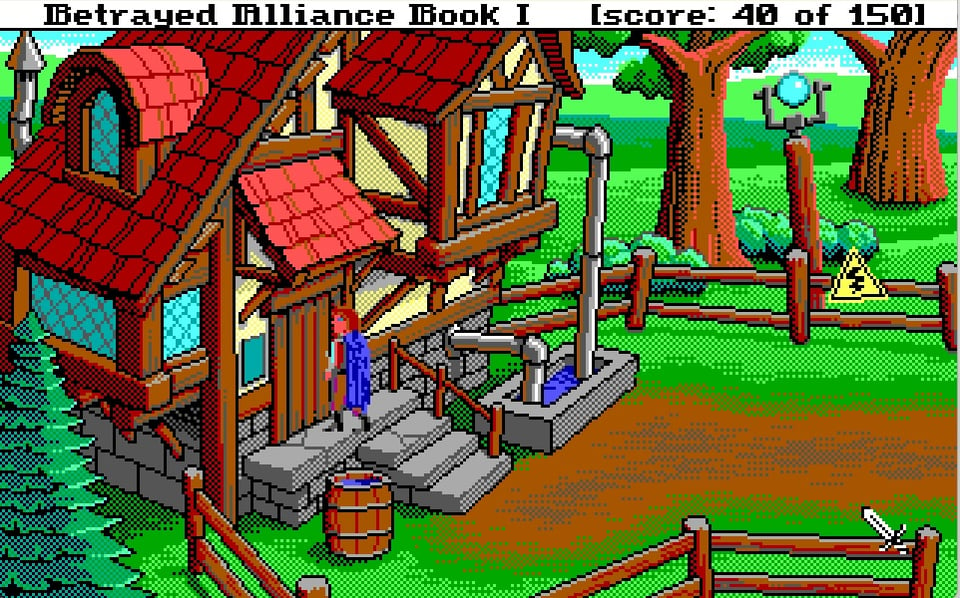
“Wait, this looks familiar!” I thought when I first saw ►Betrayed Alliance: Book 1. Beautiful pixel art in the lush EGA colors of DOS days long gone, the menu bar up top with the score… this can only be a classic Sierra adventure! Of course, it’s not, but it looks authentic to the last expertly placed pixel.
The fan game is the first in a trilogy by developer and author Ryan J Slattery. Best of all, the game is free and there’s even the source code available. You can support the project either directly by pitching in or getting the game’s official guide with a world map and colored illustrations.
The Lumberjack
In Development • There’s Work for the Axe
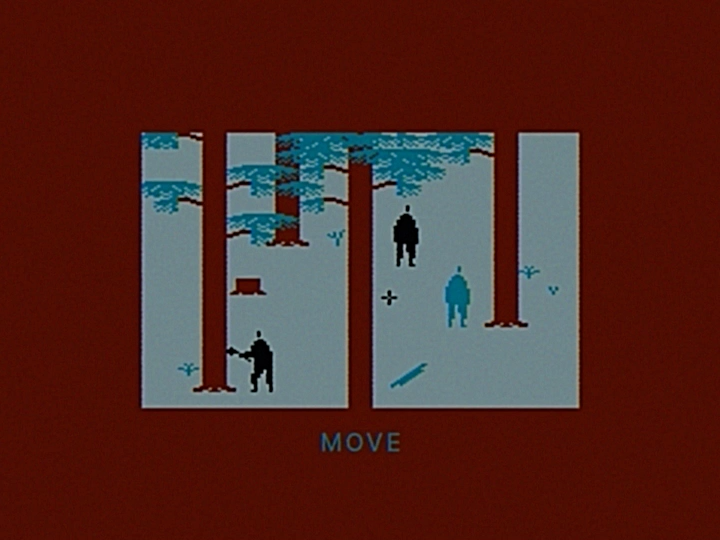
While still very much a work in progress, deadlyyucca’s ►The Lumberjack is one of these games where a few screenshots or a GIF are enough to catch my curiosity. Granted, there’s not much more info out in the wild; only that it’s about “lumberjacks at the end of the 19th century.” Its limited palette, minimalist animations, and that juicy CRT filter hint at so much more than what’s on the screen.
Be sure to also gawk at deadlyyucca’s Instagram, or scroll down to this issue’s Art and Inspiration segment. deadlyyucca is open for commissions, too.
Utopia Must Fall
In Development • Shall We Play a Game?
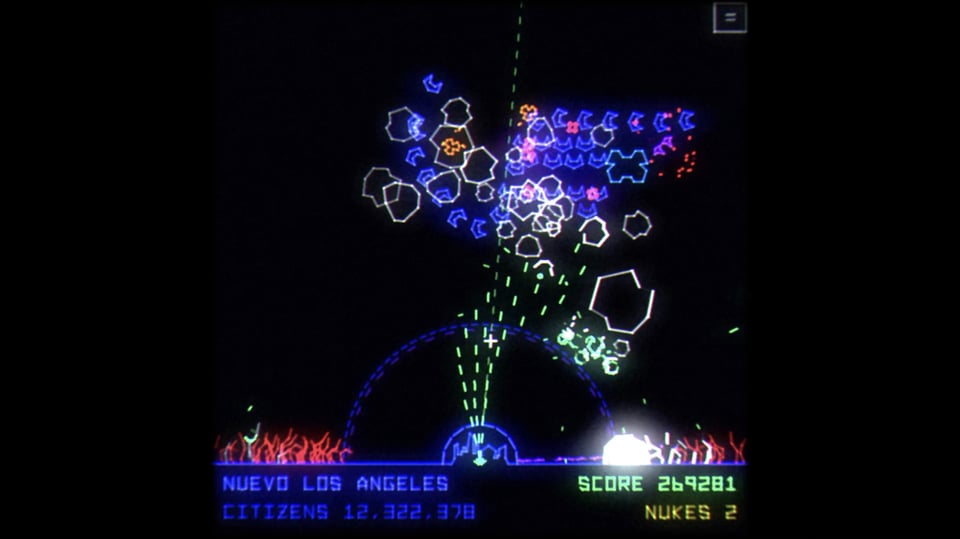
When you think “retro”, your first association might be “pixels”, as it is with so many game developers making retro(-ish) games nowadays. But in the 1980s there already existed a display technology with a history of its own—vectors. Tennis for Two (1958), one of the first computer games ever, displayed its action on an oscilloscope, for example. Even twenty years later, the first arcade machines didn’t plot pixels but bright lines. Lunar Lander (1979), Asteroids (1979), and Missile Command (1980) are prime examples, there even was a vector-based home console, the Vectrex in the 1980s.
Developer Pixeljam’s ►Utopia Must Fall attempts to bring back the days of sharp edges and glowing geometric shapes. The game is as retro-ish as they come, a frantic mashup of the games I mentioned (with Galaga, 1981, thrown in for good measure), all wrapped in the dazzling lights and colors of a 1980s neon sign showroom.
The Steam store page lists all the game’s features, my favorite among them is the last one about the game being “[…] reasonably priced to help offset the unreasonable cost of everything else.“
Currently, there’s a downloadable demo for wannabe laser commanders, Utopia Must Fall’s release is expected to fall in the third quarter of 2024.
Aliens Neoplasma II
Released • This Time It’s Personal
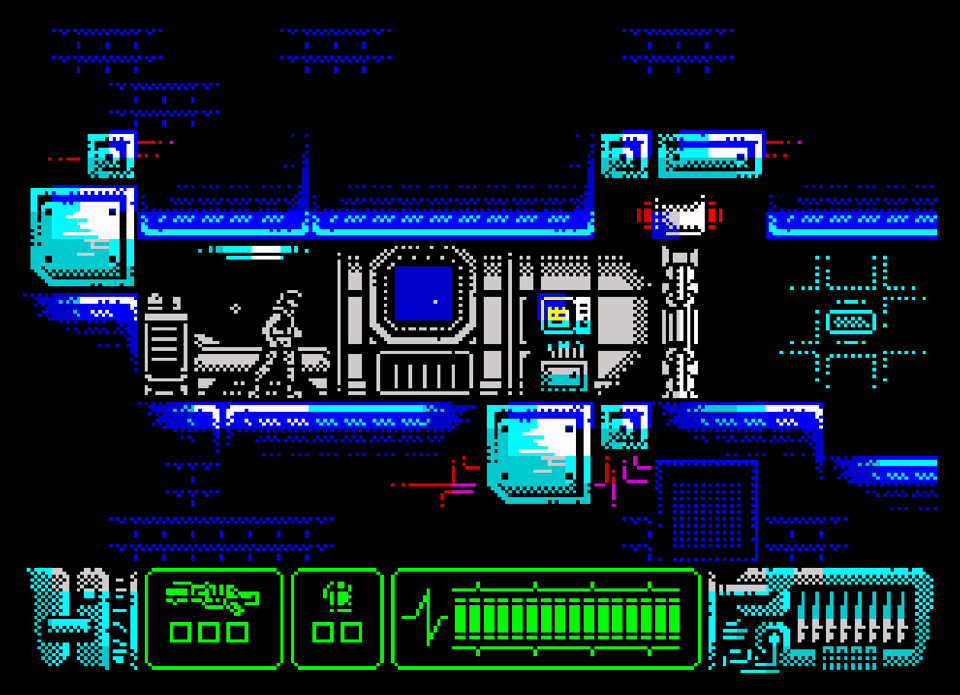
While the quality of the Alien movies seems to be on a slow but steady decline, retro games have never been better. Case in point is Sanchez Crew’s ►Aliens Neoplasma II, “a continuation of the first game by Sanchez Crew [from 2024 - Ed.], set in the Aliens universe.“
In contrast to the other games I showcased in this issue, Aliens Neoplasma II is not merely retro-ish but full-bore retro as it not only pretends it’s running on old hardware, it was made to run on the ZX Spectrum 128 and the Spectrum Next; the latter version with slightly better graphics but otherwise unchanged gameplay. Personally, I prefer the ZX 128’s visuals.
The game is a classic run-and-gun-shooter, although with puzzle and survival elements and the constant threat of xenomorphs and human adversaries alike. Also check out Sanchez Crew’s other Spectrum games, they all seem excellent modernizations of retro gameplay with modern design philosophies.
SpaceProblem
Released • THING FIND!

It’s yet another of these games, the ones where just a single screenshot gets me curious. In the case of Polyducks’ ►SpaceProblem, it was the original mix of neon colors and slightly glitchy textmode art. The 1980s color scheme and expressive animations made it stand out from many other GB Studio-developed games I’ve seen. That’s right, SpaceProblem also runs on the original GameBoy, as well as on the Analog Pocket.
Polyducks describes the game as a “simple, textmode-art looping puzzle-adventure game” that revolves around THINGS on a space station that you have to extract with your limited air supply.
The game is complete, but Polyducks plans to keep adding features and levels.
[ECHOSTASIS]
Released • The Matrix Has You

Retro doesn’t mean just “retro games”, to me it’s about anything that evokes that special, intangible feeling of nostalgia from deep within. One look at Jamie Gavin’s a.k.a. ENIGMA STUDIO’s ►[ECHOSTASIS] does it for me, it’s tape-punk aesthetics of a VHS player kicking the bucket is just as evocative as its surreal landscapes.
The feeling it gave me is hard to describe but I’ll try. Imagine being a kid again, alone at home, a thunderstorm raging outside. You’re way past your bedtime but too afraid to sleep. You remember that VHS you meant to watch with your friend, that tape they nicked from their older sibling, but the two of you never got around to it. Now’s the time, you think, and pop that unlabelled tape in the “good” VHS player, the one in the living room. The worn tape creaks. It’s hard to tell what you see, a vintage Estonian sci-fi film perhaps? You don’t understand a thing but you keep watching. Your fear of the thunderstorm has shifted to a more intangible one. Whatever you can make out from the tape, you know it’ll linger with you for a long time. Confused and afraid you fall asleep eventually, to nightmares stranger still. And those nightmares are [ECHOSTASIS].
Pinning the game down is hard but not impossible. Mechanically it’s a first-person puzzle-shooter with psychedelic elements that “presents a world where our reality is not only curated by algorithms but created by them,” a “fully playable existential nightmare within a story that could only take place within the medium of games.” (source). The game is the “climactic conclusion to THE ENIGMA TRILOGY”, presumably ENIGMA STUDIO’s previous games THE ENIGMA MACHINE (2018) and MOTHERED, which look just as enticing.
On a personal note, I must mention the trilogy’s VHS shaders. As some of you might know, I work in film & broadcast, have edited on tape machines back in the day, and have seen my fair share of VHS filters. Whatever ENIGMA STUDIO has cooked up comes as close to authentic VHS as only a real tape-setup could. That moiré! That dirty tape head! That muddy chromatic subsampling! I love every unstable scanline of it. Kudos!
Your parents just woke you up, you’re still in front of the TV, the screen only showing static now. You want to get rid of the tape but when you press the VCR’s eject button, there is nothing.
The Big Catch: Tacklebox
RELEASED • Get Hooked!

What you perceive as “retro” certainly depends on when and where you were born, and what technology and subcultures surrounded you in your formative years. To me, “retro” is the Commodore 64, to younger people it might as well be the Playstation.
If that’s the case, then Filet group’s ►The Big Catch: Tacklebox might be your cozy cup of cocoa then: It looks and feels like it was released smack-dab at the end of the PS2 era of action adventures when developers had fully figured out the system and made their games soar.
The Big Catch: Tacklebox is an expertly crafted and varied action platformer where just watching the main character traverse the levels is fun already. The characters are lovingly designed and professionally animated, the mechanics look engaging, and the level design feels familiar.
Did I mention that Tacklebox is free since it’s meant as a teaser for the full game, The Big Catch that’s still in development? The game even supports various graphic modes that allow you to turn the fluid PS2 aesthetic into a PS1 game seen through a CRT screen.
Programming & Game Dev
Tools, resources, wisdom, humor.
HOT TAKE • The Best — To ruffle some feathers right away, let’s begin with a hot take𝕏 by long-time game developer Christer Kaitila a.k.a. McFunkypants on what’s the Best Programming LanguageTM.

MORE GAMES • MOAAAR! — Yes, last week was the Summer Game Fest. With other events coat-tailing I’m struggling to keep up with all those games. Instead of cherrypicking, I decided to point you directly to the relevant presentations.
First, there’s the ►Day of the Devs, initially started back in 2012 by Double Fine and iam8bit. They are now an official non-profit and “fully independent from other videogame-related organizations, which clarifies [their] commitment to being 100% platform agnostic.” Here’s their segment in Geoff Keighley’s continuous advertising program.
A little under the radar was ZlimBratSki’s ►Indie FPS Summer Showcase with over 70 game previews, reveals, news, and, updates. And on Saturday the ►Wholesome Direct indie game showcase took place; some of the 70+ games might be familiar to readers of the Pixel Prophet.
GAMEDEV • Tears of the Physics system — To players, The Legend of Zelda: Tears of the Kingdom (2023) was a fun physics sandbox that allowed them to concoct creative contraptions, to us developers the sheer technical feat of Nintendo’s engineers was just as amazing: How did they implement such a solid and durable physics system that doesn’t crater the performance of their handheld with all the creative freedoms they give to players?!
GameDeveloper.com’s senior editor Bryant Francis ►posted about how Nintendo pulled off the impossible.
In the same vein, here’s a GDC talk on how they designed and tested the mechanics in Legend of Zelda: Breath of the Wild (2017) that led to their “Chemistry Engine”.
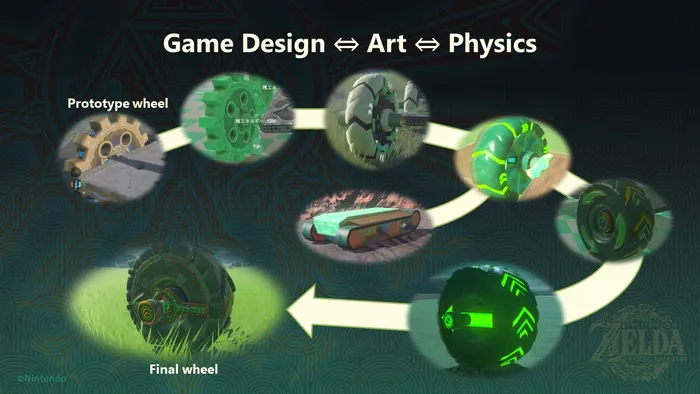
GAME DESIGN • Mathematics is your friend — Kit Barry on PAXsims ►tells the story of “a magic trick of a Choose Your Own Adventure: Al Leonardi’s Ace of Aces, a paper computer running a first-person shooter, programmed in 1980.” It’s even more than that as you play against a human opponent (both of you have a first-person view of each other), in a real, printed, physical book, the “paper computer”.
The article’s first part explains the game, a fascinating topic in itself, but the second part is where the nerdiness thickens. Kit delves into the juicy mathematics necessary to make the book possible and what can be learned from Ace of Aces when designing simulations. (via Konstantinos Dimopoulos on Mastodon)
MODDING & ROM HACKING • DIY-ania — Recently, ►Mario Builder 64 has been making the rounds in the usual circles as it’s a fan-developed Mario Maker-like for making Super Mario 64 (1996) levels that run on the actual hardware! But, of course, it’s not the only ROM-hacking fan project out there, not by a long shot!
What is ROM-hacking? In this context, a “ROM” refers to a console game. In the case of old consoles, a game’s code is stored inside its cartridge on a ROM chip (i.e. read-only-memory) in machine language, meaning the raw instructions for the console’s processor. This is not meant to be modified or read by humans. ROM-hacking, now, is the act of altering this machine code by clever reverse engineering.
Recently I learned of the existence of ►Metroid Construction, “the ultimate resource for all things Metroid hacking related” that’s been around for over 15 years. At the time of writing, it lists 686 ROM hacks of various Metroid games, ranging from small tweaks to outright total conversions. If you know Super Metroid’s levels and mechanics inside-out and crave more content, Super Metroid: Ascent is sure to satisfy with “whole new level design, new visuals, and even some new mechanics. It has approximately the same amount of rooms as [the] original game but bigger rooms and the difficulty is harder […] but not too much.”
If you want to go more retro still, game developer Sylvie praises𝕏 the NES hack Junkoid’s “[…] great level and secret design, great woman game, lovely way to spend 2-3 hours.”
The classic retro Nintendo triforce wouldn’t be complete without The Legend of Zelda (1986) and you can bet your pixely ass that there’s plenty of originality to be found there as well. A long-time staple with streamers and players alike has been the A Link to the Past Randomizer that “shuffles the location of all the important items” in A Link to the Past (1991) for the SNES. Of course that only scratches the surface of what’s possible. ROMhacking.net lists 62 hacks for that game, and just as many for the NES original.
Let me direct you to a Reddit thread recommending more Zelda ROM hacks before I wave you good-bye.

READING • 10,000k+ words on a screen — I might be old, but reading on a screen never feels as comfortable as looking at black ink on flat dead trees. Nonetheless, writing and reading take place fully digital nowadays (we’re both doing it right now) so making blogs and websites with big swathes of copy as pleasant as possible should be a priority.
Probably that’s why Adrian Hon asked the Fediverse which websites “[…] make reading 10,000k words a delight,” and the replies didn’t disappoint. It seems many people prefer a book-like, clutterless experience (duh!) that also works well on mobile, with convenient footnotes and previews of links, with position bookmarking and marginalia as a bonus. As for typeface, I noticed a strong preference for serif fonts. Print is not dead, it just moved somewhere else.
OPERA • Behind the Browser — I remember Opera as being the “luxury” choice among browsers as you had to pay for it whereas us plebs used Internet Explorer and Netscape Navigator as those were free. The past twenty years I’ve lost track of Opera as a company which may have been a blessing: The Spacebar’s Corbin Davenport published a concise overview of what they have been up to over the years and, well… We’re talking scamming people out of their money, crypto and dark patterns. I hope that YoYo Games, also owned by Opera, won’t enshittify my beloved Game Maker Studio! (via Kevin Baumont on Mastodon)
ADOBE • Alternatives — When you watch my weekly streams, you probably know my rants about Adobe, how shitty Photoshop has become, and if only I could switch to something else (but never do). If you are more adventurous than me (and less beholden to clients requiring bullet-proof Adobe compatibility), writer David Dawkins ►shared a great overview of FOSS (free and open source software) alternatives for many of Adobe’s products which I reproduce here. As always, browse the original toot’s replies for more good stuff.

SIERRA • A Buried Treasure — Sierra On-Line is a name revered by adventure gamers for the quality, writing, and presentation of their games. Sierra’s first game, arguably the very first graphical adventure in history, Roberta William’s Mystery House (1980) was programmed by her husband and Sierra co-founder Ken. Soon their business expanded and the need arose for a framework, an engine, tailored to making and porting adventure games.
This resulted in the creation of Sierra’s AGI, the Adventure Game Interpreter, with King’s Quest (1984) being the first game made with it. Having this powerful, proprietary engine in-house certainly put Sierra ahead of the competition as their developers could spend more time designing games than reinvent the wheel each time anew.
But with the release of Space Quest II (1988), another AGI-powered adventure, something happened. Not very obvious but still enough to lay bare Sierra’s intellectual property. See, the game got released and distributed with AGI’s source code!
You can read up on this little fascinating footnote of history in Lance Ewing’s well-illustrated post ►“The Space Quest II Master Disk Blunder”.
It would have been terrifying back in the day, but this slip wasn’t discovered until 2016, 28 years after the fact. To video game historians nowadays it’s a wonderful glimpse into a time capsule of how games were made back then.
INSTANT MESSENGERS • Comparison — Which instant messenger you can use on multiple devices? Which allows for end-to-end (E2E) encryption of messages? Which one also works on Linux? All these questions (and more) are answered by the big ►IM Comparison chart. Eylenburg also compares operating systems, browsers, payment methods, among other things on that site.
HISTORY • The Nokia N-Gage — When I say “Nokia N-Gage”, people in my age group who’ve been there will involuntarily recall the phone’s most striking feature: To make calls, you had to press the device’s edge against your face. This peculiarity aside, it was Nokia’s serious stab at the mobile gaming market—as early as 2002.
With the release of a book retelling the phone’s story (“Fantastinen Floppi” by Heikki Jungmann, Finnish only, though) a certain Sebastian Aaltonen, the lead programmer on Pathway to Glory (2004), the N-Gage’s flagship game, felt to share his side of things in a thread𝕏, (archived). It’s another historic look into the realities of developing games.

GOOGLE SEARCH • The Konami Code of Searching — Let’s face it: Google’s core feature, finding stuff on the web, has become worse over the years and now with them adding an inherently flawed AI (by their own admission), things will get worse. Probably that is also why Google has a fast and clean version of their search available—although obscured. To access it, all you have to do is to add &udm=14 at the end of the search URL, Tedium suggests. Suddenly the results are blazing fast again, gone are the “smart” pull-out quotes, the boxes, the “People also search for” modules, etc. Although it won’t purge the sponsored results. (via John Gruber on Mastodon)
PIXEL FONTS • Blocks to Spell Words — Indie dev Eeve Somepx offers a lot of original, expressive ►pixel fonts, ideal for retro-ish game dev on itch.io. They all look very good and are reasonably priced.
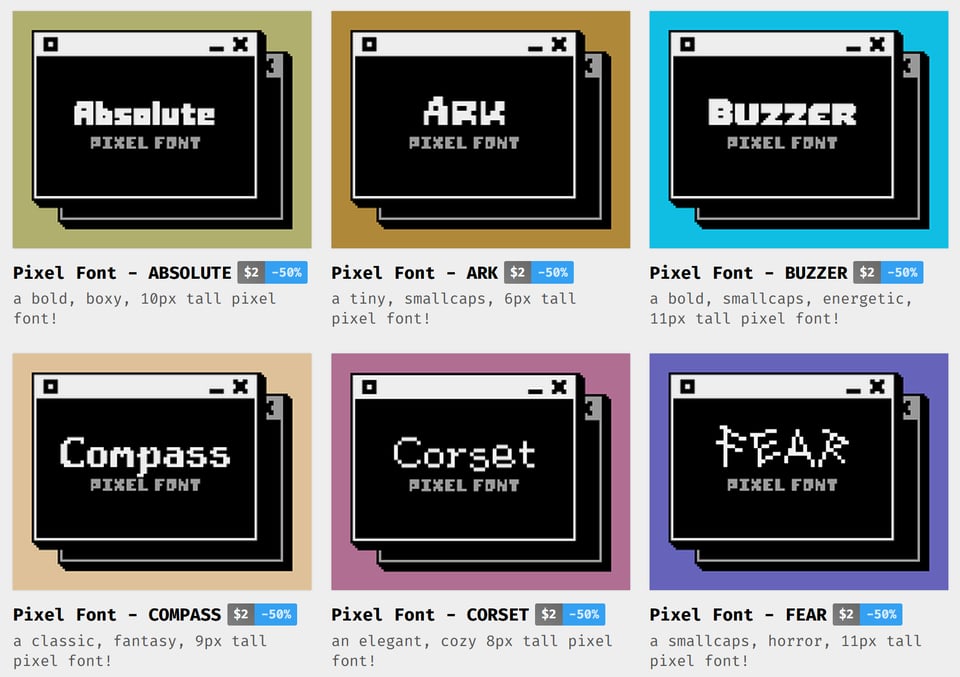
WINDOWS 11 • Ad-Removal Tool — Big corpos are really outdoing themselves lately in providing the worst user experience to their “customers”. While AI is the latest trend to bedazzle shareholders and investors, good old ads remain another staple. Luckily, there are people like web dev Maddy Wilcox to develop tools for the people to help them keep the deluge of utter corporate shite at bay. The latest is ►OFGB (“Oh Frick Go Back!“), a tool that disables system-wide ads that Microsoft introduced to Windows 11 in late April. (via nixCraft on Mastodon)
BOOK • “Emotion in Video Game Soundtracking” — Probably not only interesting to scholars, Emotion in Video Game Soundtracking by Duncan Williams and Newton Lee “[…] combines real-world experience from practitioners (composers, audio engineers, virtual reality designers, and cognitive scientists) with the latest cutting edge research methodologies.” While the cutting-edgeness might not fully apply anymore (the book came out in 2018), it might still be a good foundation. However, the price is steep, even for the eBook! (via Video Game Library on Mastodon)
Art & Inspiration
Art, science, and other inspirations that left an impression on me
Haunting pixel art by deadlyyucca.
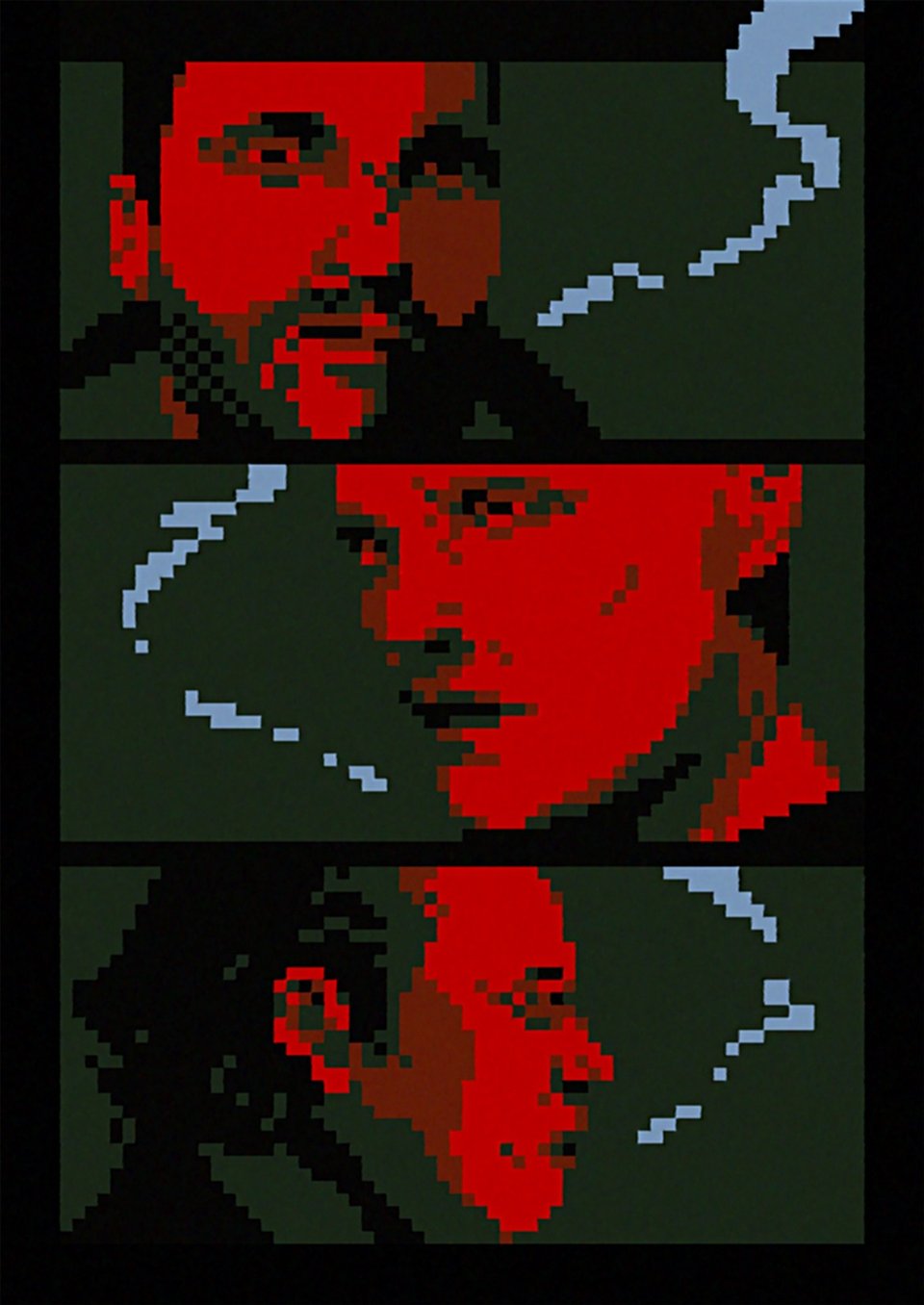

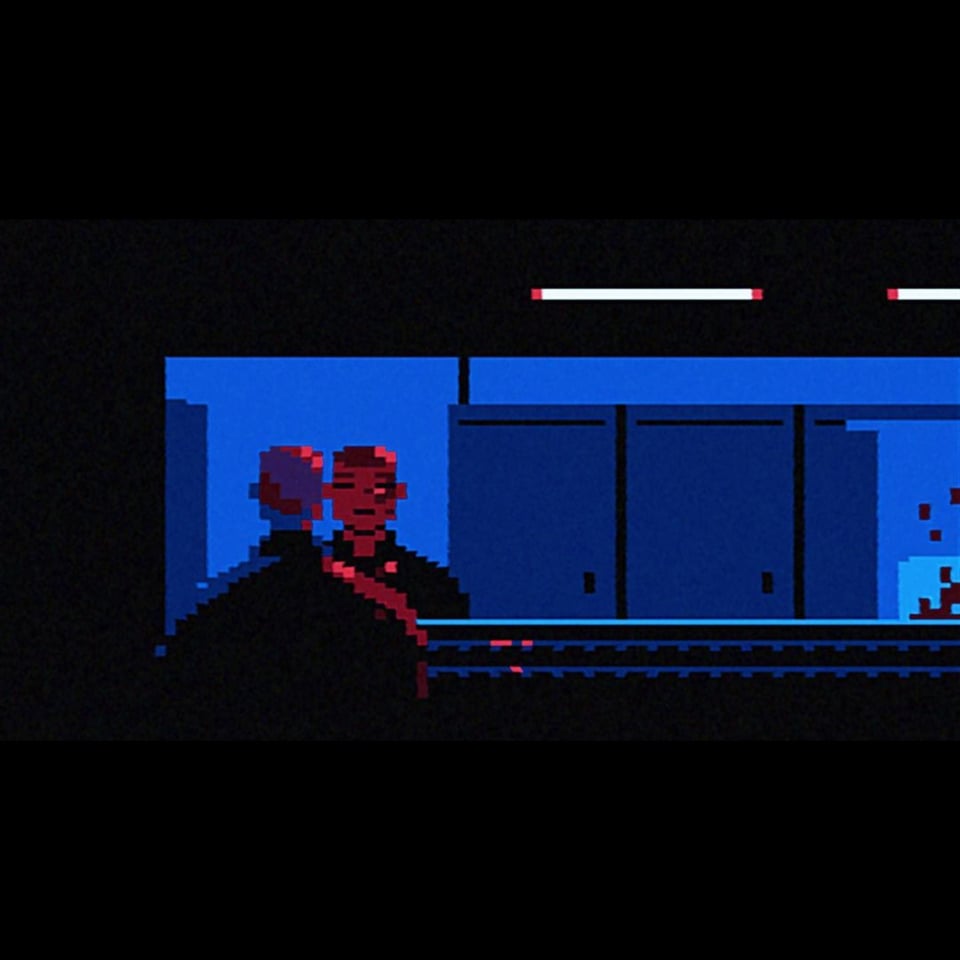
More at deadlyyucca’s Instagram
Pixel’s Mixed Bag
What I’ve been up to
◾ Oof! Another of those stressful weeks, but my own retro-ish game that began as a joke is now almost complete enough for a first release. I wish I had had more time to work on it but a certain newsletter was in dire need of publishing. Here’s ►the link to the game on itch.io again, but it might still not be launched “officially” when the Prophet reaches your inbox. I trust your discretion, friend!

}

(by Amon26𝕏 on Twitter)
You can support the Pixel Prophet at ko-fi, or donate via PayPal to ensure its sustainability. It also helps to tell others about the Prophet who share your great taste in newsletters.